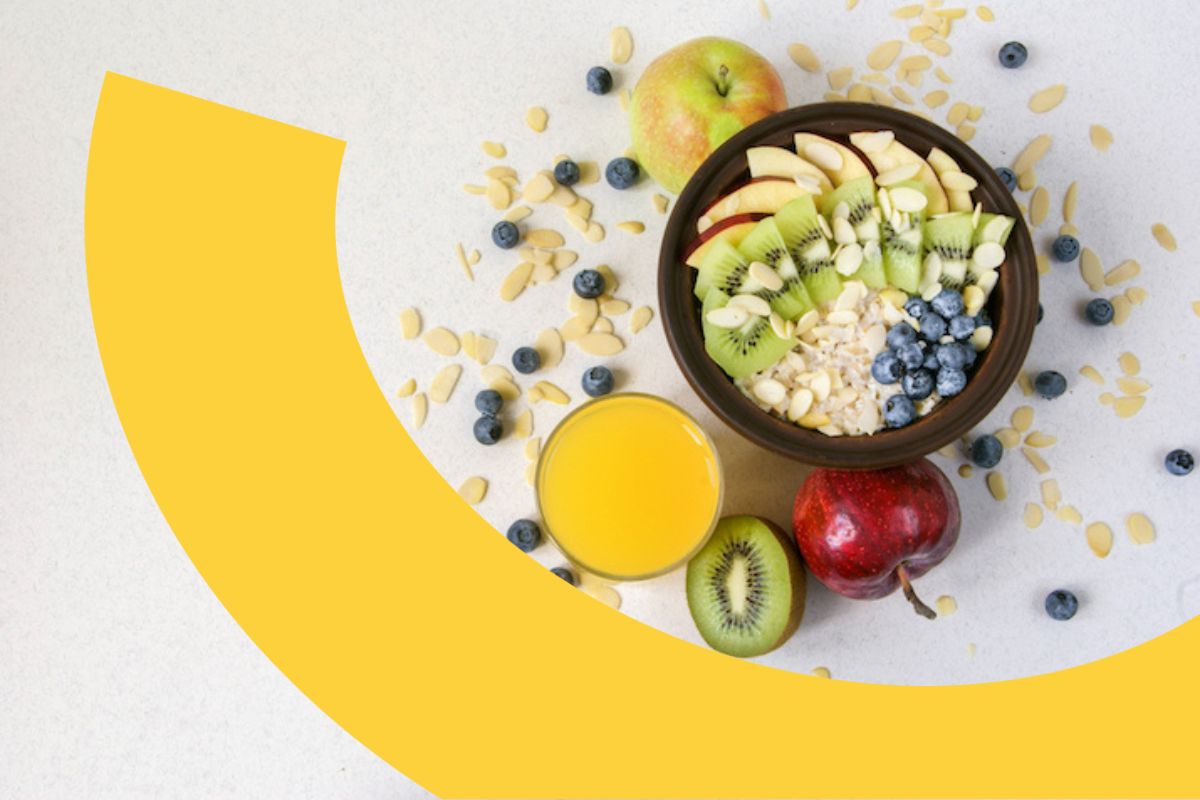The principles of post-workout or recovery nutrition can be quite simple and easily be accounted for in a client’s custom nutrition plan. They should be to: provide energy to replace muscle glycogen stores, help maximize the repair of muscle damage, and sufficiently replenish any fluids & electrolytes lost during training.
If that sounds like a mouthful, consider learning the three “R’s” of recovery: Refuel, Rebuild & Rehydrate. These 3 principles are the cornerstones of post-workout & recovery nutrition. They are also essential in maximizing the training effect. This training effect can have different applications depending on the type, intensity & duration of the activity. In this blog, we’ll first take a look at an overview of the 3 R’s of recovery and then break down a few sample recovery diets for 3 specific workouts.
3 R’s of Recovery
Refuel
- Nutritional recovery starts by refueling with glycogen or carbohydrates. Carbohydrates provide our bodies and brains with fuel needed to recover and ultimately adapt to the training session.
- Current data indicates that after a workout the muscle cells’ ability to begin rebuilding and replenishment peaks at about 15 minutes and declines by as much as 40% within 60 minutes.
- Researchers report that immediate intake of carbohydrates results in a 300% increase in muscle glycogen at 2 hours and a 135% increase at 4 hours.
Rebuild
- Next you must rebuild cells by focusing on the protein and amino acids required to help maximize muscle repair. Even during a simple cardio session there is muscle breakdown, so protein is an essential component for all post-exercise nutrition.
- In a review published in 2010 by the International Journal of Sports Nutrition Exercise and Metabolism, researchers noted that the consumption of 20g of protein, or an equivalent of 9g of essential amino acids, can maximize muscle protein-synthesis rates during the first hours of post-exercise recovery.
- However, the amount of protein needed in the post-workout period is often overestimated. There are certain levels of protein that are needed, but more doesn’t always mean more muscle or better recovery.
- Depending on the type and intensity of exercise, and the total calories of course needed for recovery, a range of .3-.5 g per kg bodyweight is recommended. Or more simply perhaps, a 3:1 ratio for Carbs-Protein.
Rehydrate
- Finally and just as important is Rehydration. You may know that the body is made up of 60% water. You may not know that fluids help regulate body temperature, blood pressure, and also transport energy & nutrients throughout the body.
- That is why it is essential to allow the body to achieve balance and maintain the process of recovery by replenishing any fluids lost.
- Cramping and muscle fatigue can often keep clients from sticking to a workout plan. By rehydrating and replenishing sodium, they’ll be able to reduce these post-workout symptoms.
- To find out more about how you can calculate how much your clients should be drinking, check out this Evolution Nutrition blog post on hydration.
1. Steady State Cardio Recovery Nutrition
Goal:
To rehydrate & replenish electrolytes while maximizing post exercise caloric ‘burn’, aka ‘Afterburn’.
Recovery Snack Options:
Fresh fruit with high water content –like watermelon, apples, citrus fruits, with low-fat cottage cheese or non-fat yogurt.
Whole-wheat crackers with fruit and cheese
- 6 whole wheat crackers
- 1 medium apple (sliced)
- 2 slices non-fat cheese
Nutrition: 278 Calories / 43g Carbohydrate / 13g Protein / 6g Fat
Post-Workout Yogurt Parfait
- ¼ C nonfat yogurt
- ½ C whole grain cereal
- ½ C fresh strawberries (or other berry)
Nutrition: 270 Calories / 62 g Carbohydrate / 10g Protein / 2g Fat
Guidelines:
- Fluids & electrolytes can be consumed immediately after and should be equal to about 16-20 fl oz of water/fluid for every pound lost during the steady state cardio.
- If bodyweight loss cannot be measured, a good rule of thumb is to drink 1 cup immediately after exercise, and 2-3 cups of fluid over the course of the next few hours of recovery.
- Wait 20-30 minutes before you start to replenish energy stores with carbohydrates, proteins or fats, but listen to your body and eat if you feel like you need to fuel.
2. Weightlifting Recovery Nutrition
Goal:
To maximize the “Anabolic window” or recovery phase within 30-45 minutes after the workout.
Recovery Snack Options:
Pita bread with hummus & black bean spread
- ½ Whole Wheat Pita (Large)
- 2 tbsp Hummus
- 2 tbsp Black Bean Spread
Nutrition: 261 Calories / 46g Carbohydrate / 8g Protein / 5g Fat
Oatmeal Protein Power
- ½ C cooked Steel-Cut Oats
- 1 tbsp shaved Almonds
- 2 tbsp favorite Protein Powder
Nutrition: 287 Calories / 40g Carbohydrate / 16g Protein / 7g Fat
Guidelines:
- As with any workout, carbohydrates are essential to recovery post-weightlifting.
- In order to successfully rebuild muscle, special attention should be paid to how much protein is being consumed.
3. Recovery Nutrition for HIIT (Cardio & Weightlifting)
Goals:
To replace energy stores within 30 minutes after workout.
To repair muscle tissue
Recovery Snack Options:
1 post workout drink that is equal to about ¼ of total carbs needed for recovery. This could a 12-16 fl oz fruit smoothie made with water, skim milk or a non-dairy milk alternative and protein powder. AND 1 workout snack:
Power Fruit Smoothie
- 1 ½ C Skim Milk (nonfat)
- ½ C Frozen Berries
+ - Banana & PB on rice cakes
- ½ Banana, Raw (small)
- ½ tbsp Peanut Butter
- 1 Multigrain Rice Cakes
Nutrition: 297 Calories / 47g Carbohydrate / 16g Protein / 5g Fat
Guidelines:
- Since HIIT has a higher work rate, there will be more fluids used and more fuel burned. That means both will need to be replenished in higher rates than in the other two workouts.
- The combo of cardio and weightlifting in HIIT will require an initial liquid recovery snack, which can be consumed first or closely followed by a nutrient dense meal or snack.
- Post workout, 3:1 ratio is a good standard to use with carbs and protein.
– 30 to 40 grams of carbs with 10-15 grams of protein - You can also eat 1-1.5 g/kg bodyweight of carbohydrates post workout and approximately more to compensate for the higher work rate.
References
- Workout Nutrition Timing (pre, during, post-exercise)
– ACSM Position Stand Nutriton & Athletic Performance Medicine & Science in Sports & Exercise: March 2009 – Volume 41 – Issue 3 – pp 709-731 - ISSN Exercise & Sorts nutrition Review: Research & Recommendations
Journal of the International Society of Sports Nutrition 2010, 7:7 - Nutrient timing revisited: is there a post-exercise anabolic window? Alan Aragon & Brad Jon Schoenfeld. Journal of the International Society of Sports Nutrition 2013, 10:5 doi:10.1186/1550-2783-10-5
- Post Workout Recovery: Your Anabolic Ignition Switch By George L. Redmon Ph.D. N.D. http://www.theissnscoop.com/post-workout-recovery-your-anabolic-ignition-switch/
- Berardi, J.M., Price, T.B. et.al. Post-exercise muscle glycogen recovery enhanced with a carbohydrate-protein supplement. Medicine and Science in Sports and Exercise. 2006 Jun; 38(6):1106-13.
- Beelen, M., Burke, L.M. et.al. Nutritional strategies to promote post-exercise recovery. International Journal of Sports Nutrition Exercise and Metabolism. 2010 Dec; 20(6):515-532.
Take your Fitness Business to the next level.
Start your free 30-day trial of Trainerize.

